Selected References:
- Agency for Toxic Substances and Disease Registry (ATSDR). 2020. Toxicological Profile for Tetrachloroethylene. https://wwwn.cdc.gov/TSP/ToxFAQs/ToxFAQsDetails.aspx?faqid=264&toxid=48. [Accessed 2023]
- Aschengrau A, et al. 2020. Reproductive and developmental health effects of prenatal exposure to tetrachloroethylene-contaminated drinking water. Environ Sci Process Impacts, 22(3):555-566.
- Aschengrau A, et al. 2018. Modeled exposure to tetrachloroethylene-contaminated drinking water and the occurrence of birth defects: a case-control study from Massachusetts and Rhode Island. Environ Health, 17(1):75.
- Aschengrau A, et al. 2015. Long-term health effects of early life exposure to tetrachloroethylene (PCE)-contaminated drinking water: a retrospective cohort. Environ Health, 14:36.
- Aschengrau A, et al. 2009. Prenatal exposure to tetrachloroethylene-contaminated drinking water and the risk of congenital anomalies: a retrospective cohort study. Environ Health, 8:44.
- Bagnell PC and Ellenberger HA. 1977. Obstructive jaundice due to a chlorinated hydrocarbon in breast milk. Can Med Assoc J, 117:1047–1104.
- Bosco MG, et al. 1987. Health and reproductive status of female workers in dry cleaning shops. Int Arch Occup Environ Health, 59:295-301.
- Brown Dzubow R, et al. 2010. Early life stage exposure and potential developmental susceptibility to tetrachloroethylene. Birth Defects Res B Dev Reprod Toxicol, 89(1):50-65.
- Centers for Disease Control and Prevention (CDC). 202. Breastfeeding and special circumstances- occupational exposures. Available at URL: https://www.cdc.gov/breastfeeding/breastfeeding-special-circumstances/environmental-exposures/index.html [Accessed 2023].
- Centers for Disease Control and Prevention. (CDC). 2019. NIOSH Pocket Guide to Chemical Hazards: Tetrachloroethylene. https://www.cdc.gov/niosh/npg/npgd0599.html [Accessed 2023].
- Centers for Disease Control and Prevention. (CDC) 2013. Tetrachloroethylene Toxicity What Are the Physiological Effects of Tetrachloroethylene Exposure? https://www.atsdr.cdc.gov/csem/csem.asp?csem=14&po=10
- Doyle P, et al. 1997. Spontaneous abortion in dry cleaning workers potentially exposed to perchloroethylene. Occup Environ Med, 54(12):848-853.
- Eskenazi B, et al. 1991. A study of the effect of perchloroethylene exposure on semen quality in dry cleaning workers. Am J Ind Med, 20:575-591.
- Fisher J, et al. 1997. Lactational transfer of volatile chemicals in breast milk. Am Ind Hyg Ass J, 58:425-431.
- Forand SP, et al. 2012. Adverse birth outcomes & maternal exposure to trichloroethylene & tetrachloroethylene through soil vapor intrusion in New York State. Env Health Persp, 120(4):616-621.
- Getz KD, et al. 2012. Prenatal and early childhood exposure to tetrachloroethylene and adult vision. Environ Health Perspect, 120:1327-1332.
- Janulewicz PA, et al. 2008. Risk of learning and behavioral disorders following prenatal and early postnatal exposure to tetrachloroethylene (PCE)-contaminated drinking water. Neurotoxicol Teratol, 30(3):175-185.
- Januelewicz PA, et al. 2012. Adult neuropsychological performance following prenatal and early postnatal exposure to tetrachloroethylene (PCE)-contaminated drinking water. Neurotoxicol Teratol, 34(3):350-359.
- Kyyrönen P, et al. 1989. Spontaneous abortions and congenital malformations among women exposed to tetrachloroethylene in dry cleaning. J Epidemiol Community Health, 43(4):346-351.
- Laumon B, et al. 1996. Exposure to organic solvents during pregnancy and oral clefts: a case-control study. Reprod Toxicol, 10:15-19.
- Mirazi N, et al. 2023. Maternal long-term inhalation exposure to perchloroethylene and prenatal
- teratogenicity: morphometric, hormonal, and histological study. Toxicol Mech Methods, 33(3):206-214.
- Modenese A, et al 2019. Evaluation of occupational exposure to perchlorethylene in a group of Italian dry cleaners using noninvasive exposure indices. Int J Environ Res Public Health, 16(16):2832.
- Nijhuis N, et al. 2010. Tetrachloroethylene. In: WHO Guidelines for Indoor Air Quality: Selected Pollutants. Geneva: World Health Organization; 9.
- Nickerson K. 2006. Environmental contaminants in breast milk. J Midwifery Womens Health, 51(1):26-34.
- Occupational Safety and Health Administration (OSHA). 2005. Guidance and Information for Reducing Worker Exposure to Perchloroethylene in Dry Cleaning. https://www.osha.gov/dsg/guidance/perc.html [Accessed 2023].
- Ruckart PZ, et al. 2013. Evaluation of exposure to contaminated drinking water and specific birth defects and childhood cancers at Marine Corps Base Camp Lejeune, North Carolina: a case-control study. Environ Health, 12:104.
- Sallmen M, et al. 1995. Reduced fertility among women exposed to organic solvents. Am J Ind Med, 27:699-713.
- United States Environmental Protection Agency (EPA). 2023. Final Risk Evaluation for Perchloroethylene (PCE). https://www.epa.gov/assessing-and-managing-chemicals-under-tsca/final-risk-evaluation-perchloroethylene-pce. [Accessed 2023]
- United States Environmental Protection Agency (EPA). 2012. Toxicological review of tetrachloroethylene (perchloroethylene). [EPA/6363/R-08/011F Feb 2012]. https://cfpub.epa.gov/ncea/iris/iris_documents/documents/toxreviews/0106tr.pdf [Accessed 2023]
- Zielhuis GA, et al. 1989. Menstrual disorders among dry-cleaning workers. Scand J Work Environ Health, 15:238.
- 89. Menstrual disorders among dry-cleaning workers. Scand J Work Environ Health 15:238.

